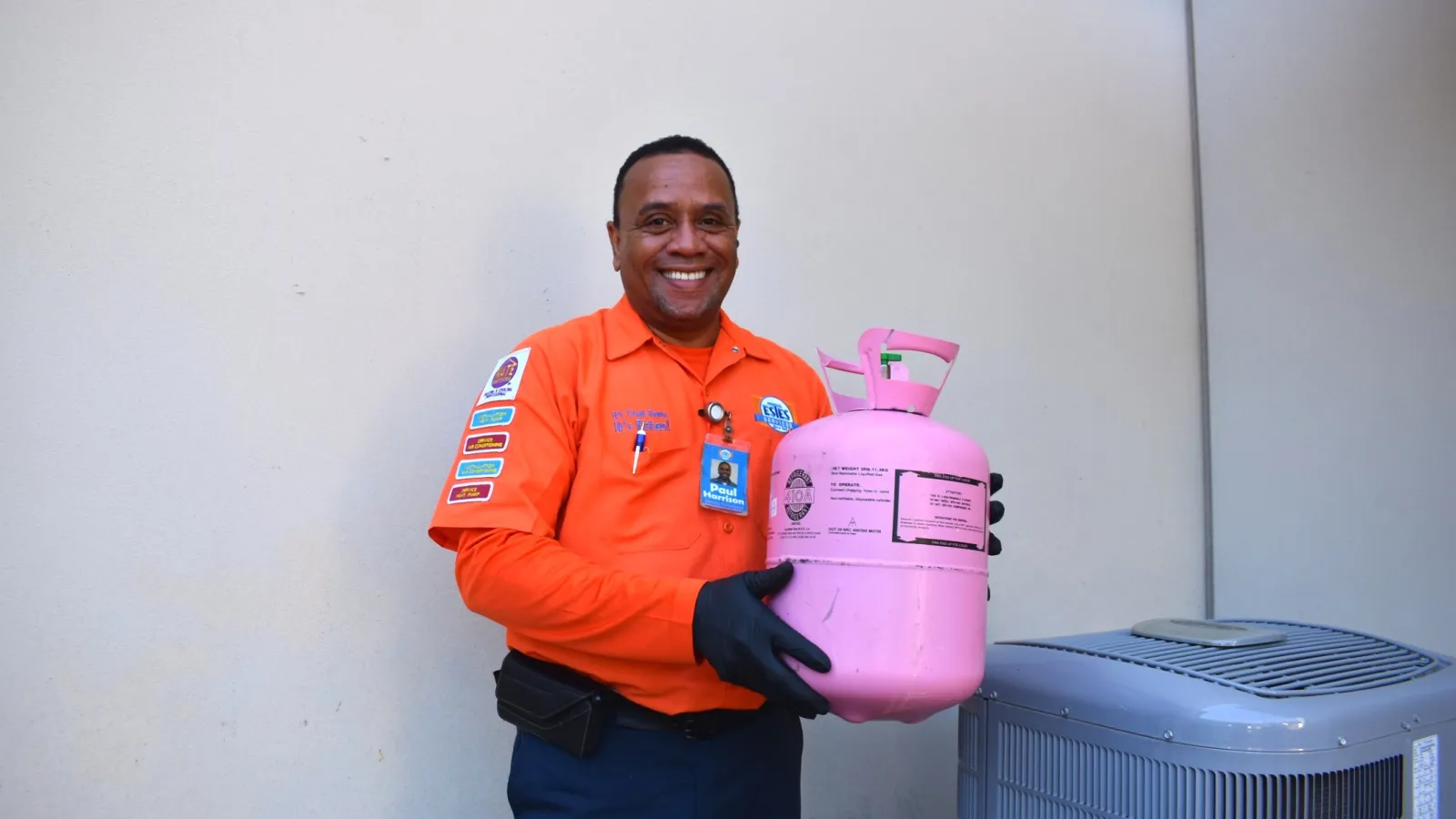Atlanta area households use air conditioning around the clock during the summer. This constant work can eventually lead to repairs or other issues, including unwanted smells coming from your AC unit.
Estes Services aims to help keep your home smelling fresh this season. Learn what causes air conditioner smells, where they lurk and what to do to get rid of them. For professional air conditioning maintenance, call Estes Services today!
What Causes Air Conditioner Smells?
The primary cause behind most air conditioner smells and odors inside the home is the growth of mold and mildew inside certain components. A lack of maintenance and malfunctions can create the perfect environment for mold and mildew inside air conditioners.
Some dust and other debris settle on the evaporator coil as air passes over during the cooling process. Problems with the air conditioner and its components introduce more moisture into the area. The contaminants and moisture trapped in the natural darkness of the system’s interior transform into a perfect home with all the elements mold and mildew need to develop and multiply.
The presence of mold and mildew create air conditioner smells. The continued use of the smelly air conditioning system allows that odor to move through the duct system and into your home. Unfortunately, air conditioner smells are sometimes the least severe effect produced by mold and mildew in the system. Mold and mildew has the potential to spread through the ducts and into the home, where it causes damage to your home and serious health consequences for family members.
Problem Zones Within Your Air Conditioner
The evaporator coil is the air conditioner component most prone to mold and mildew development. As the air conditioner runs, air moves over the coils, and the coils extract excess heat to cool down the air. While the air first passes through the furnace filter and other air purification devices, if applicable, some contaminants remain airborne but fall out of suspension and ultimately rest on the coils. Forgetting to change the air filter or a faulty filtration system can increase the amount of dust and other particles that settle onto the evaporator coil.
As the evaporator coil extracts heat, dehumidification of the air is a natural byproduct of the cooling process. The condensation that forms normally runs off the evaporator coils and into the drip pan below and out the connected condensate drain. If the drip pan or condensate drain are damaged or clogged, moisture is trapped in with the evaporator coil to create a damp, dank and dark environment well-suited for mold growth. Mold can even form in the drip pan, which leads to clogs that prevent the drain of condensation, furthering the issue.
As cooling cycles continue to run, air runs over the mold-laden evaporator coils, inevitably picking up some spores. Some of these spores fall out of suspension in the ductwork, creating a new zone of growth and spread in the area. Some make it into the home, where they spread to surfaces and continue to thrive in the right environment. As indoor air returns to the air conditioner for another cooling cycle, airborne mold spores are not always removed by the filter or air purification system. Dirty air filters cannot trap new contaminants, and filters rated MERV 4 and below are not capable of trapping mold spores even when brand new.
Control Air Conditioner Smells
To stop the spread of air conditioner smells into your home, you must stop them at the source by controlling the conditions that cause mold and mildew to flourish.
- Replace furnace filters on a regular schedule. During the summer, it is wise to check them monthly to assess if an early change is warranted due to increased contaminant removal when more cooling cycles run each day.
- Have your HVAC system technician perform a preventive maintenance tune up on your air conditioning system. This service cleans evaporator coils and surrounding areas, cleans the drip pan and removes clogs from the condensate drain line, if warranted, to eliminate the conditions mold and mildew love.
- Check the drip pan and condensate drain regularly for clogs, and remove them by flushing the line and cleaning the drain pan.
- Have your air cleaner or UV lights serviced by your HVAC technician. If you do not have these devices in place, talk to your technician to learn if they are appropriate for your home.
Call Estes For Air Conditioner Help
Don’t let air conditioner smells ruin your summer! Make sure to call Estes Services today to schedule the maintenance and repair services your air conditioning system needs, and create a mold-free zone throughout your air conditioner and your home!


